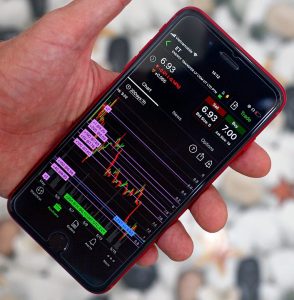Trading bonds in Australia can be a lucrative investment opportunity for savvy investors looking to diversify their portfolios. With a well-established bond market and a stable economy, Australia offers numerous opportunities for bond traders to profit from fixed-income securities. In this article, we will provide a comprehensive overview of bond trading opportunities in Australia, key trading strategies, current market trends, trading platforms, performance metrics, and market analysis related to Australian bonds.
Bond trading in Australia is primarily conducted through the Australian Securities Exchange (ASX) and over-the-counter (OTC) markets. Bonds in Australia are typically issued by the government, corporate entities, and municipalities to raise capital for various projects or operations. Government bonds, also known as Treasury bonds, are considered some of the safest investments, as they are backed by the Australian government’s credit rating.
Investors can trade a variety of bonds in Australia, including government bonds, corporate bonds, hybrid securities, and municipal bonds. Each type of bond offers unique risk and return characteristics, making it essential for traders to diversify their bond portfolios to manage risk effectively.
Key trading strategies in the Australian bond market include yield curve trading, duration trading, credit spread trading, and relative value trading. Yield curve trading involves betting on changes in interest rates across different maturities, while duration trading focuses on capitalizing on changes in bond prices due to interest rate movements. Credit spread trading involves exploiting price differentials between bonds with different credit ratings, while relative value trading aims to profit from mispricings between similar bonds.
Current market trends in the Australian bond market include low interest rates, high demand for safe-haven assets, and increased issuance of government bonds to finance economic stimulus measures. The COVID-19 pandemic has also impacted the bond market, leading to increased volatility and uncertainty among investors.
Trading platforms such as Bloomberg Terminal, Eikon, and trading platforms offered by brokerage firms provide traders with access to real-time bond prices, news, and research. Performance metrics such as yield to maturity, duration, and credit rating help traders assess the risk and return profile of bonds. Market analysis tools such as technical analysis, fundamental analysis, and macroeconomic indicators can also help traders make informed decisions.
Effective bond trading requires a combination of technical analysis, fundamental analysis, and risk management techniques. Traders should carefully research bond issuers, monitor market trends, and set stop-loss orders to mitigate potential losses. Diversifying bond portfolios across different issuers, industries, and maturities can also help spread risk and improve overall portfolio performance.
In conclusion, trading bonds in Australia offers numerous opportunities for traders to profit from fixed-income securities. By leveraging key trading strategies, using trading platforms effectively, and staying informed about market trends, traders can navigate the Australian bond market successfully. Whether you are a beginner or experienced trader, understanding the complexities of bond trading in Australia can help you achieve your investment goals and build a diversified portfolio.








